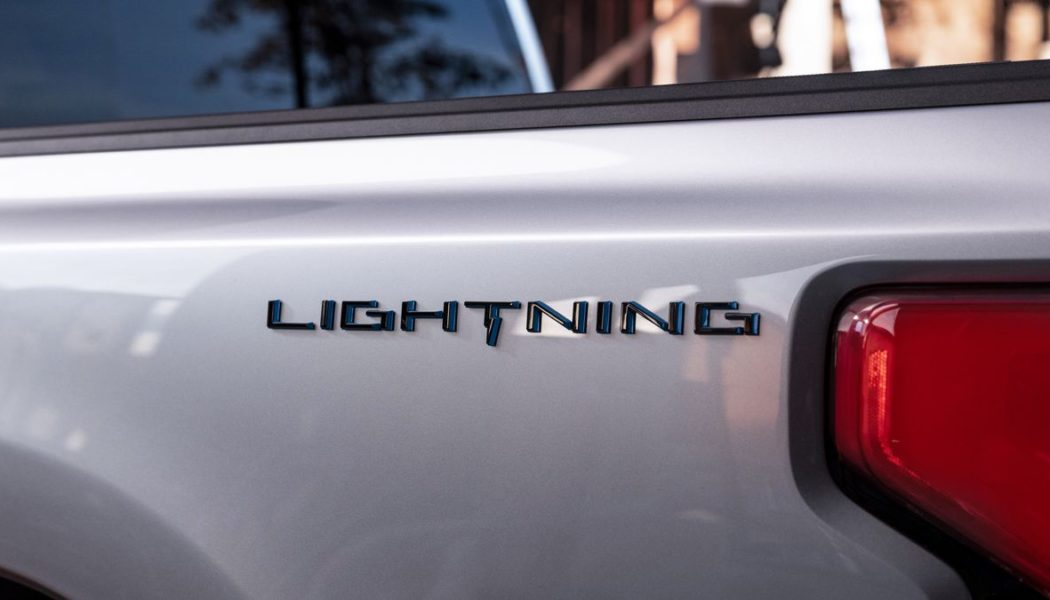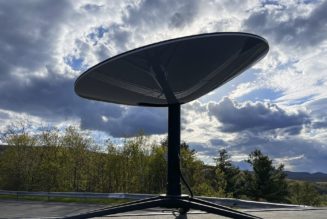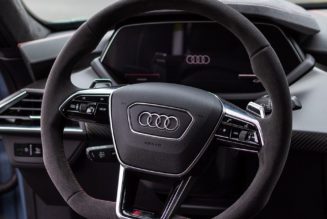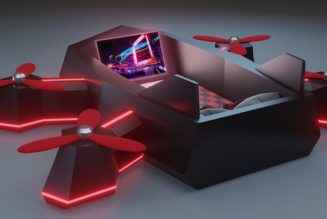Ford is set to unveil its next major electric vehicle, the F-150 Lightning, at 9:30PM ET on Wednesday, May 19th. But this isn’t just another EV event. An electric version of the automaker’s iconic F-series pickup truck is a very big deal for Ford, for the auto world, for car buyers, and even for the US economy.
Ford is very proud of its F-series trucks, and for good reason. It’s the bestselling truck in the US for 44 years. It’s also the bestselling vehicle in the country, period. According to Edmunds, F-series trucks are the most popular vehicle in 30 out of 50 states in the US.
That means the F-Series trucks create a huge windfall for Ford. The Detroit automaker netted around $42 billion in revenue in 2019 from nearly 900,000 F-series truck sales in the US, according to a Boston Consulting Group study commissioned by Ford — more than most major companies and about four times as much as Tesla made in all of 2020.
The F-150 Lightning has already drawn the interest of President Joe Biden, who is touring Ford’s Rouge Electric Vehicle Center outside Dearborn, MI, and likely will get an early look at the truck ahead of its debut Wednesday evening. Biden will probably use the company’s announcement to highlight his own $2 trillion infrastructure plan, which includes billions of dollars for companies and consumers of electric vehicles. The president in particular is interested in cultivating domestic EV production, and the F-150 Lightning would provide the perfect backdrop.
The F-150 Lightning has been in the works for over four years, with Ford first announcing its intention to manufacture an all-electric F-series in 2017. As such, some details have already started trickling out. Here’s what we know so far.
[embedded content]
Performance
Ford has said the F-150 Lightning will be more powerful than any other F-series truck in its lineup. That means, at minimum, it will be heftier than the 430-horsepower F-150 PowerBoost or the 450-horsepower Ford F-150 Raptor. Given the fact that it’s an electric truck with near-instantaneous acceleration, it will also likely best the 570ft-lb of torque generated by the hybrid F-150 PowerBoost.
We got a little bit of a demonstration in 2019, when a heavily camouflaged F-150 Lightning was shown pulling 10 double-decker rail cars over 1,000 feet. It did it twice, once when the rail cars were empty and a second time with them loaded with 42 regular, gas-burning F-150s. The latter stunt put the entire load at 1.25 million pounds. That’s a lot of towing capacity.
Of course, Ford described the towing stunt as a “one-time short event demonstration” and claims it is “far beyond any production truck’s published capacity.” Right now, Tesla holds the record for pulling the heaviest load, when a Model X towed a 287,000-pound Boeing 787-9 Dreamliner nearly 1,000 feet on a taxiway at the Melbourne Airport in Australia last year.
Towing uses battery power, which in turn diminishes the vehicle’s range, so how Ford presents this information in the context of the F-150 Lightning’s battery capacity will be very important to watch. Ford hasn’t revealed how far the truck will travel on a single charge, though the distance is expected to be ample. And if it doesn’t sound like it’s enough to satisfy the most range-anxious among us, Ford recently filed for a patent for a truck bed-mounted range extender, so it sounds like there will be options available.
As far as acceleration, expect a 0–60mph time somewhere in the three-second range. Rivian, GMC, and Tesla have all quoted sub-four-second 0–60 accelerations. Given the nature of electric powertrains and their near instant torque, there’s no reason to think the F-150 Lightning will be any slower.
Whatever the exact specs, Jessica Caldwell, director of insights at Edmunds, says Ford will likely try to use the electric F-150 to prove “that you can still accomplish everything you would with an internal combustion engine [truck].” Ford has been quite good at convincing truck buyers to get behind new ideas, she says, like using aluminum bodies or switching to the smaller, turbo-charged EcoBoost engine. “The truck market has been fairly open to embrace some of these changes that we thought would shock them,” she says.
Ford hasn’t announced the sticker price yet. Expect a lot of attention paid to the “total cost of ownership” and the assertion that electric vehicles, on average, require less maintenance than their gas-powered counterparts. (This will also be a big deal for fleets and could appeal to proponents of Biden’s plan to swap all 645,000 vehicles owned by the federal government with EVs.)
But even with rising new car prices, Caldwell says the sticker price will still matter. Truck buyers, she says, really want to know “what am I going to get for my money?”
:no_upscale()/cdn.vox-cdn.com/uploads/chorus_asset/file/22522525/Lightning.jpg)
Design
If you’re hoping for some crazy, outside-the-box design a la the Tesla Cybertruck, think again. This is Ford we’re talking about, the 117-year-old company that practically invented boring, easily repeatable, mass-market vehicles. Legacy automakers tend to be more conservative when it comes to design. We don’t expect the company to stray too far from the elements that make its current F-series lineup so popular.
That said, there will be some unique design cues that help differentiate the F-150 Lightning from its gas-powered siblings. Teaser images show an unbroken light bar that runs the full width of the grille, headlight to headlight, in what looks like an upside U-shape. The grille itself will also look different by either partially or fully closing off the ventilation, given that EVs have no combustion engine under the hood to cool.
The inside of the F-150 Lightning is expected to be absolutely crammed with technology. Much like the 2021 F-150, the electric version will come with an optional hands-free driving mode called BlueCruise, be capable of receiving over-the-air software updates, and come with wireless Apple CarPlay and Android Auto.
It will be interesting to see how Ford balances the trend toward an all-digital user experience inside the vehicle with its customers’ desire for tactile controls. The 2021 F-150 comes with a 12-inch landscape touchscreen in the center of the dashboard, while the Mustang Mach-E has a massive 15.5-inch portrait touchscreen. Whether it’s horizontal or vertical, the F-150 Lightning’s infotainment system is likely to be cutting edge by Ford’s standards.
Will truck owners go for an electric F-150?
The US is a country of truck drivers. They are equally popular among hard-hat wearers and Costco shoppers alike. While EVs represent only 2 percent of the overall car market, trucks are a $90 billion-a-year industry.
Ford will eventually go head to head against some potentially heavy hitters like Tesla and General Motors, as well as new players like Rivian, Lordstown, and Canoo. Though battery costs tend to drive up the prices of electric vehicles compared to their gas-powered equivalents, those costs are coming down and are expected to reach parity with gas cars in the near future. For automakers, the bigger the SUV or truck, the more profit they tend to pocket.
Large vehicles already account for the majority of the domestic auto market. Half the vehicles sold in the US in 2020 are SUVs and crossovers, and pickup trucks captured an additional 20 percent of the market.
Whether customers will go for an electric F-150 remains to be seen. Over a quarter of vehicle owners polled say they would consider an electric F-150 EV, while 45 percent say they would not consider one, and 27 percent are undecided, according to CarGurus. By comparison, 31 percent said they were interested in a Tesla Cybertruck and 16 percent would consider a Hummer EV. Among Ford truck owners in particular, 39 percent say they will probably or definitely own an electric truck in the next ten years.
The pickup crowd is not, traditionally, the greenest consumer demographic. But the F-150 Lightning has the potential to create a new class of “accidental environmentalists,” as described to The Wall Street Journal’s Christopher Mims by Matthew Kahn, a professor of economics at the University of Southern California. These are customers who are attracted to demonstrations of off-road capabilities, towing capacity, and gimmicky specs like “Crab walk” or adjustable suspension. They don’t care as much about climate change or carbon emissions but can be convinced to switch from polluting cars to zero emissions if the price tag and the specs are right.
The F-150 Lightning will have plenty of competition when it arrives at dealerships in 2022. Edmunds expects at least six electric pickup trucks to make their debut this year, including the Cybertruck, Rivian R1T, GMC Hummer EV, and an electric Chevy Silverado. Ford will say a lot about the loyalty of its customers at the event on Wednesday, and to some degree they have the numbers to back that up.
But truck buyers have grown increasingly fickle over the years, with less than half trading in their current truck for another rig from the same brand, according to Edmunds. CarGurus agrees, noting that the share of brand-loyal truck buyers has been cut in half versus just two years ago.
Against this backdrop of increasing infidelity among truck owners and heightened pressure regulators and competitors, the Ford F-150 Lightning will make its debut. It’s certainly in for a wild ride.










